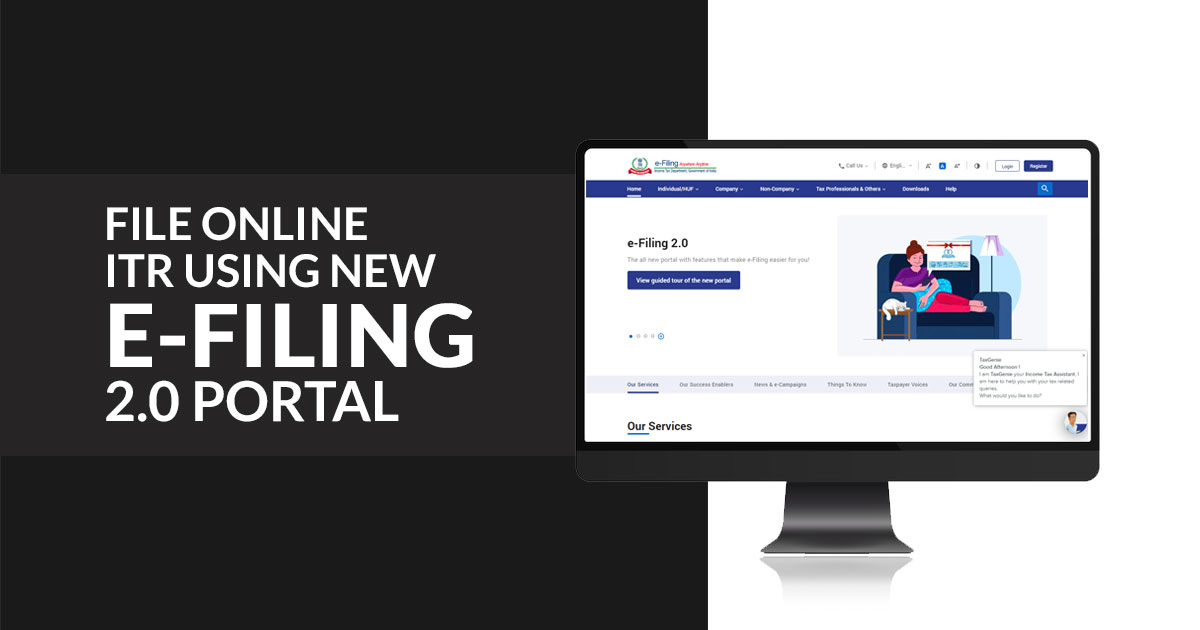
In the era of Digital India, when most of the mechanisms of payments are cashless (for saving time, cost, and effort), why not follow the practice of e-filing income tax returns (ITR)? On June 7, 2021, the Government of India launched a new e-filing web portal (having a feature of e-filing of ITR) that shall help in speedier processing and faster refunds. It is more interactive and user-friendly. To date, the statistics for the e-filing of ITR are as follows:
| Individual Registered Users on the web portal of Income Tax | 13,60,47,248 |
| E-Verified ITRs (AY 2025-26) | 8.34 Crore |
And the aforesaid figures will increase with the digitisation of the Indian economy in the near future.
How to Easily File ITR on the New Tax Portal?
Presently, ITR 1 and ITR 4 are available online for filing of ITR for individuals. And the following steps are taken to file ITR electronically:
- Step 1: In the first step, you need to register yourself on the web portal of Income-tax. The link for registration on the web portal of Income Tax is as follows: https://www.incometax.gov.in/iec/foportal/ if you are a first-time user. Use the Permanent Account Number (PAN) to register yourself on the web portal of Income Tax. Your PAN shall be your user ID, and you can enter the password as per your choice. Thereafter, you shall log in to the web portal.
- Step 2: Now, click on the options tab e-file. Then click on the option “File Income Tax Return”
- Step 3: Thereafter, you will need to choose the assessment year for which you have been filing the ITR and thereafter click on the option to continue. Then the computer will ask “whether you want to file ITR online or offline”. Select the “online” option, which is also the suggested mode of e-filing on the 2.0 portal.
- Step 4: In this step, you shall have to choose if you would have to file ITR as an Individual, HUF, or others. Choose an individual.
- Step 5: Here in this step, you need to select the ITR that you are eligible to file. There are many different choices attached to the income tax return one can file. For instance, a salaried person with total income up to INR 50 lakhs, one house property, long-term capital gains under section 112A up to Rs. 1.25 lakh and agricultural income of up to INR 5,000 can file ITR 1 “ITR 2 are filed by those individuals and HUFs who don’t have a source of income from business and profession.” To date, for individuals, only ITR 1 and ITR 4 have been available for the purpose of filing. In case you face chaos related to the tax form, you can get online help. Click on Proceed with ITR 1
- Step 6: In the next step, you have to provide the reason why you are filing ITR – whether because your Income is above the tax limit or because of the seventh provision under Section 139(1). As per Section 139(1), a person is liable to file ITR if he/she has (a) deposited more than Rs 1 crore in single or multiple current accounts during the year, (b) spent Rs 2 lakh or more on a foreign trip, or (c) paid an electricity bill amounting to Rs 1 lakh or more. Make sure to choose the right option.
- Step 7: In this step, you will have to provide the details of the bank account where you want to receive ITR refunds if you have not already provided them. Also, you’ll have to pre-validate the bank account if you haven’t done it before.
- Step 8: Now, you are ready to fill out the ITR form. Most of the columns will be pre-filled with the information already available in your account and previous ITRs. Make sure to verify this information before you submit your ITR. After that, you can confirm and validate your ITR summary.
- Step 9: Last and importantly, you shall need to verify the ITR. Remember this thing that the ITR filing process is not complete until verification of the ITR has been done. The taxpayer must send the hard copy of the document to Bengaluru.